Our Birds
North Curtis Island is home to 376 known species of birds and below are our favourites!
Black Necked Stork (Jabiru)
The Jabiru is a common sight on North Curtis Island. Also known as a Black-necked Stork, they love to roam the wetlands. The black necked stork is often called the ‘Jabiru’ however this name refers to a large South American stork that is quite different to our black-necked species.
They are a large white bird with black bands across the wings. If you get close enough you will notice that its neck is actually a beautiful iridescent purple-green.
They have extremely strong beaks which they use to hunt for snakes, frogs, turtles, eels and fish in the wetland marshes.
Your best chance to spot a Jabiru is with out the window of your car, as you drive past the wetlands, over bridges and across the floodplains.
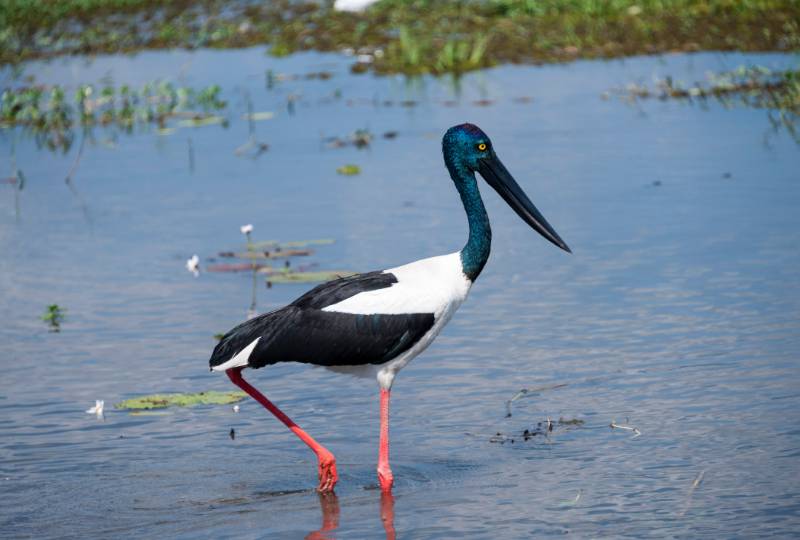
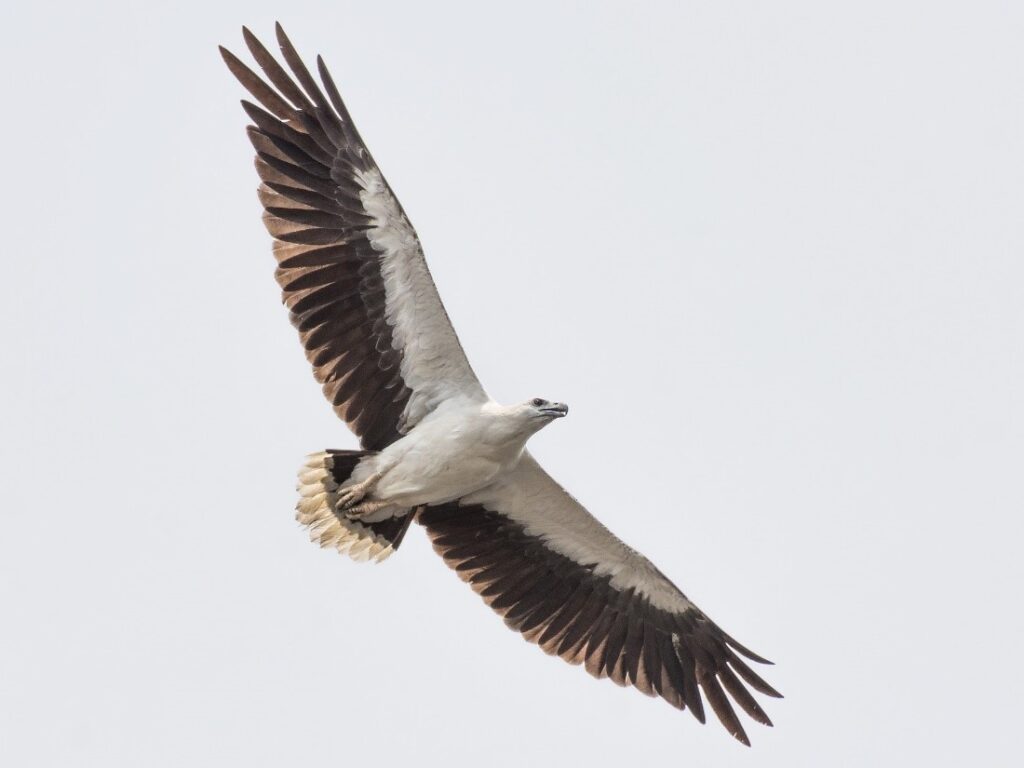
Sea Eagle
Few Australian birds of prey are as spectacular as the White-bellied Sea-Eagle.
Although it is similar in shape to the well-known Wedge-tailed Eagle, and almost as large, the sea-eagle is readily distinguished by its contrasting crisp-white and ashy-grey plumage, which adds to its striking appearance as it soars effortlessly on broad wings.
Despite its name, the sea-eagle is not confined to coastal areas, and the species is regularly recorded at terrestrial wetlands far from the sea, especially along larger inland rivers and at freshwater swamps and lakes.
Capricorn Yellow Chat
The Capricorn yellow chat, is endemic to the Capricorn Coast in central Queensland.
The Capricorn yellow chat was first collected in the Rockhampton region in 1859. Following these initial collections, it was not located in the region for some time and the sub-species was considered either a rare vagrant or possibly extinct until a small population was discovered in 1991 on Curtis Island.
Subsequently in 2003 the sub-species was rediscovered in the Broad Sound region (north of Rockhampton) and the Fitzroy River delta in 2004, with these three locations forming the only known populations.
The Capricorn yellow chat is listed as Endangered under Queensland Nature Conservation Act 1992, and as Critically Endangered under the Commonwealth Environmental Protection and Biodiversity Conservation Act 1999.
The Capricorn yellow chat is a small bird weighing 10–11g, with a wing length of 56–60mm and a bill length of 10.7–11.6mm. Breeding males have a bright yellow crown, olive back, yellow rump and a 4–6mm wide black bar across their chest, while non-breeding males are duller with the breast bar being less defined. Breeding females have a yellow crown, grading to an olive back and golden rump and vent, although the yellow crown is not always observed in breeding females. Non-breeding females are generally paler, with a white throat and chin.
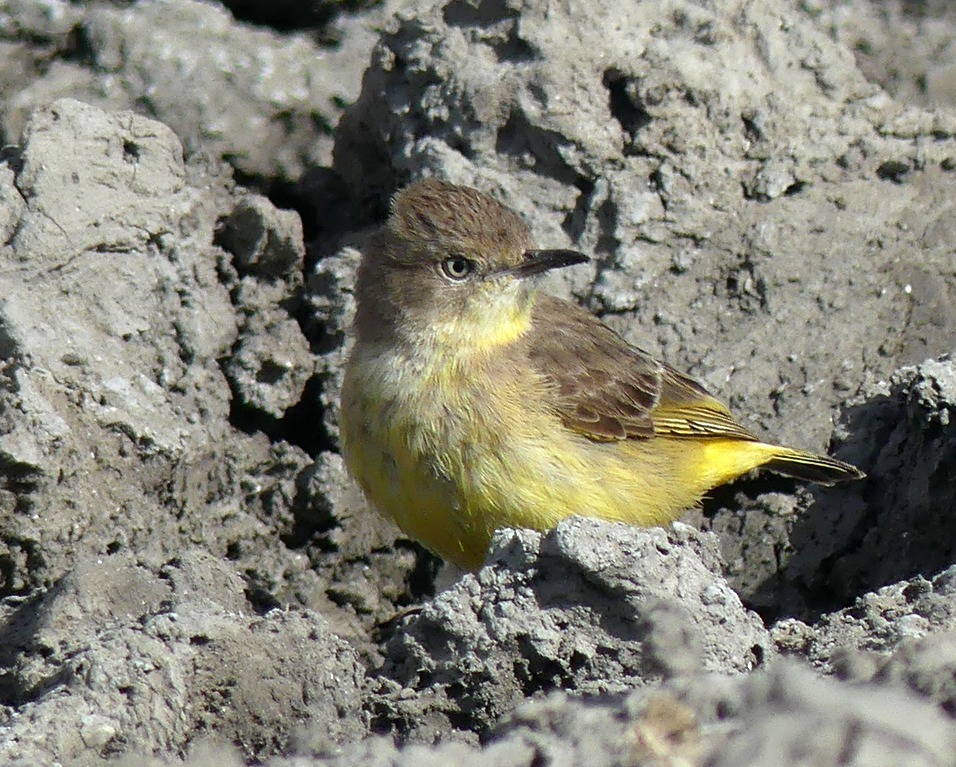
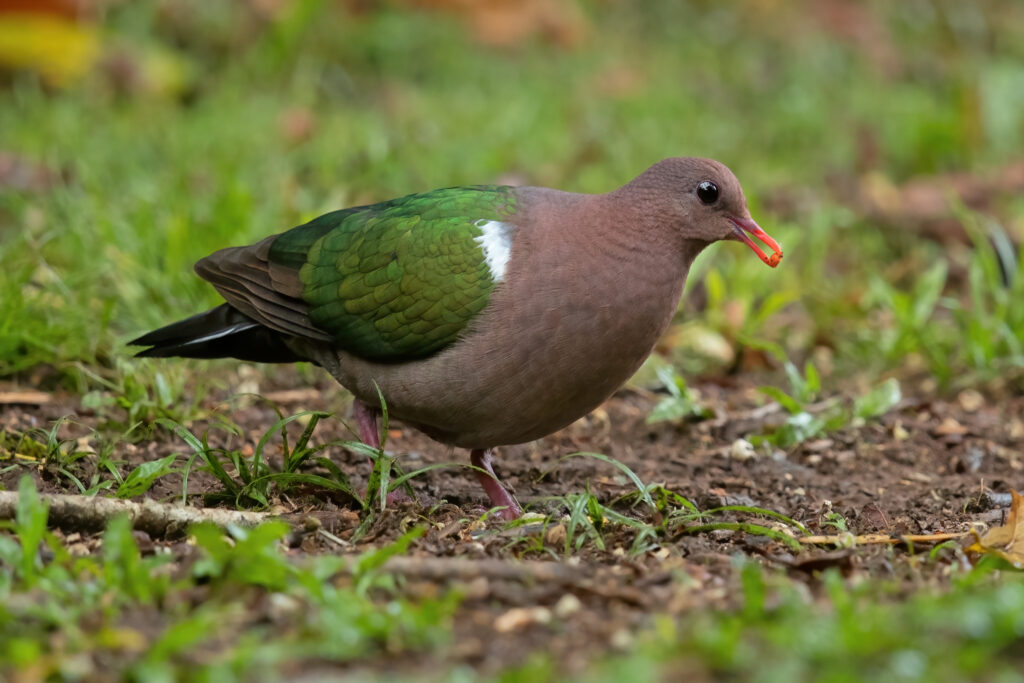
Pacific Emerald Dove
An attractive species of medium-sized dove, the Pacific Emerald Dove is very patchily distributed on North Curtis Island, being only regularly found at a small number of sites.
The Pacific emerald dove or brown-capped emerald dove is a pigeon which is a widespread resident breeding bird in the tropical and sub-tropical parts of Indonesia to northern and eastern Australia. It was formerly conspecific with the common emerald dove.
Azure Kingfisher
With its combination of royal-blue plumage on its upperparts contrasting with orange on its underparts, the Azure Kingfisher is one of the smallest and most dazzling kingfishers in Australia.
This diminutive species inhabits the vegetation beside waterways and other wetlands, where it often perches on low, overhanging branches, searching for its prey of fish, crustaceans and aquatic insects, captured by shallow plunging into the water.
Anglers on lonely rivers are sometimes surprised to find an Azure Kingfisher perched quietly on their fishing rods instead of a branch.
The Azure Kingfisher is a small kingfisher with a long slender black bill and a short tail.
The head, neck, upper parts and breast sides are deep azure blue with a violet (purplish) sheen. The neck has a distinctive orange stripe on each side and there is a small orange spot before each eye.
The throat is pale orange-white, grading to orange-reddish on belly and undertail. The flanks and sides of the breast are washed purple to violet. The legs and feet are red. The sexes are similar. Young birds have a darker cap and are generally duller.
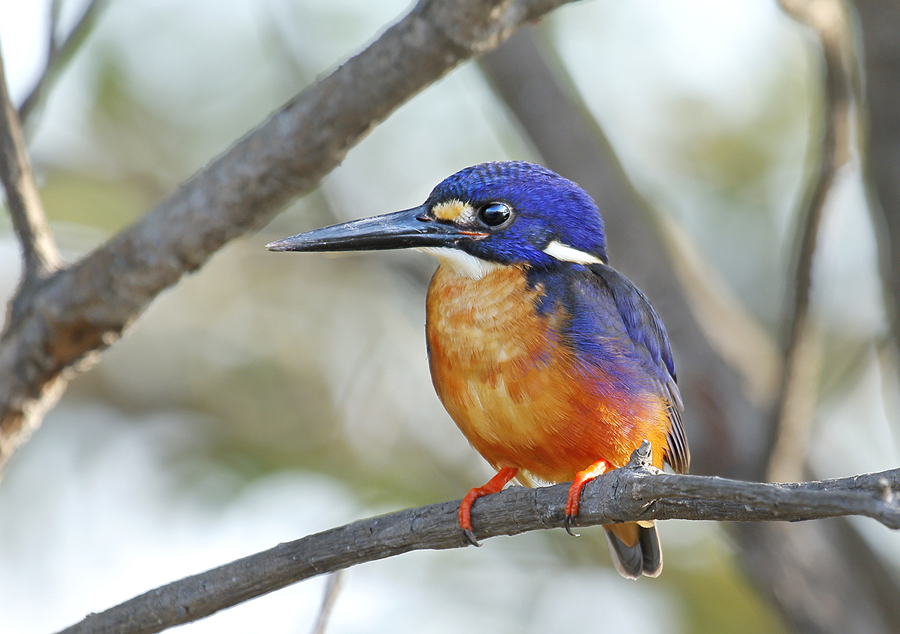
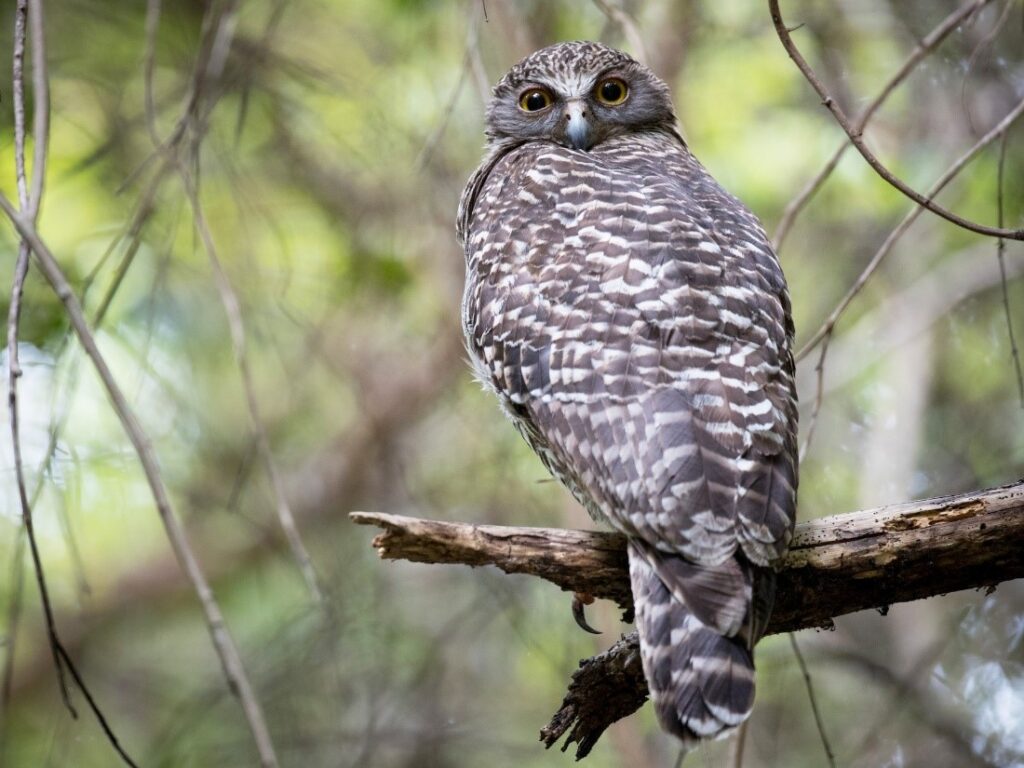
Powerful Owl
The largest of Australia’s owls, the Powerful Owl usually inhabits the moist forests of eastern Australia. Its main item of prey is possums of various species, though large bats such as flying foxes are also often caught.
They roost by day, perched in the dense shade of a tree, often with the previous night’s prey held in its talons; this is when Powerful Owls are seen most often.
The Powerful Owl is a large owl with a relatively small head and a rounded tail. It is dark grey to dark grey-brown above, with white barring, and off-white below, with distinctive dark v-shaped chevrons.
The eyes are yellow, set in a dark grey/brown facial mask. The legs are feathered and the yellow to orange feet are massive, with sharp talons.
The sexes are alike but the female is smaller, with a narrower head. Juvenile birds are downy white on the head and underparts, the underparts are sparsely streaked, and they have much shorter tails than the adults.
Powerful Owls are the largest of the Australian nocturnal birds (night birds).

